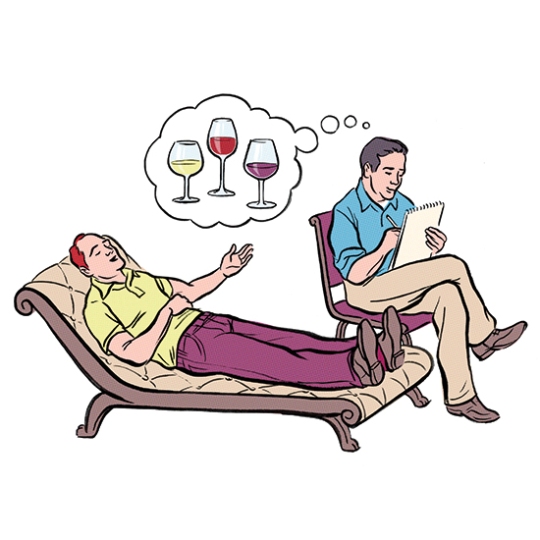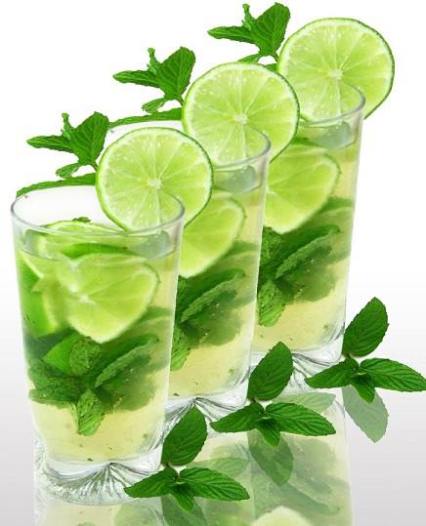F&W’s Ray Isle investigates the sommelier strategies that can help you find an ideal bottle of wine all on your own.
he Jordan Pond House, in Acadia National Park, Maine, serves lemonade in an unusual way. You’re given a big glass of unsweetened lemonade and a little pitcher of sugar syrup. Then you pour in as much syrup as you want until the lemonade is to your liking. Some people like their lemonade very tart, some people like it very sweet and most people are somewhere in the middle.
Thinking about wine in the same way isn’t such a stretch; like lemonade, some wines are very tart, some less so. In fact, although wine can seem dauntingly complex, it shares a lot of characteristics with other things you eat and drink—sourness, bitterness, sweetness and so on. If you don’t like intensely tangy lemonade, you probably won’t like intensely tangy wines. The problem is, if you’re looking at a list of unfamiliar wines, how do you know which ones you’ll like? You don’t. And, unlike lemonade, you can’t adjust a wine to your taste.
In a restaurant, of course, you can ask the sommelier—a good one can divine which wines you’ll enjoy, even if you don’t know yourself. At The NoMad in Manhattan, wine director Thomas Pastuszak refers to these skills as “the Jedi mind tricks of the sommelier,” a phrase I like if only because it brings to mind an image of Alec Guinness in Star Wars, pointing to a wine list and saying, “These aren’t the Cabs you’re looking for…”
Of course, most people don’t have sommeliers at home. So why not become your own sommelier? With that in mind, I trailed Pastuszak at work, listening to his conversations with customers who asked for help. (Most do; there are about 1,000 selections on The NoMad’s list.) Then I got in touch with Matthew Kaner, wine director at Los Angeles’s Bar Covell, who has his own approach to helping customers make choices.
At The NoMad, many of Pastuszak’s strategies were familiar, such as asking customers about the last wine they had that they really liked; even a novice sommelier knows that one. Other strategies were more akin to translation. One woman described a Pinot Noir she’d loved as being “so smooth, I just wanted to eat it like ice cream.” In my experience, “smooth” is one of the most common (and positive) words used to describe wines by casual drinkers. Unfortunately, it’s also vague. Pastuszak, though, was able to immediately interpret it as meaning “low-acid and low-tannin.” He often let the customers make the final decision, pouring them two wines side by side—a juicy Anderson Valley Pinot Noir and a lighter, brighter one from Burgundy, say—and asking if they had a preference. They always did.
He also used some very basic strategies, like asking customers to “trust me on this.” Pastuszak is a charming, articulate, good-looking guy, withan infectiously upbeat attitude: It’s hard not to trust him. And really, why wouldn’t you? Personality aside, his knowledge is vast. And choosing a wine requires more knowledge than, for instance, ordering a dish. Think of it this way: If you ask your friends whether they like beets, they’ll tell you. They won’t have to puzzle it out or admit that they’re not very beet-savvy. But with wine, casual drinkers probably can’t say whether they like Monastrell from Spain or Central Coast Grenache, even if they know that they like tart flavors, or that bitter flavors make them shudder. When dealing with a 1,000-bottle wine list, a trustworthy guide is handy.
Kaner, one of F&W’s Sommeliers of the Year for 2013, takes trust to a new level. At Bar Covell, which he co-owns, there is no wine list. There’s plenty of wine—a huge selection, in fact. But he won’t tell you what any of it is until you’ve had a conversation with him about your likes and dislikes.
This approach might seem odd, or even a little bit annoying, but Kaner’s logic makes perfect sense: “Hand someone a list with 150 selections, which is what we have at Bar Covell, and immediately, you’re assuming everyone knows everything about all 150 wines. And they don’t. So how can you expect them to make an educated choice?”
What Kaner does instead is ask his customers questions. “I don’t focus on grape varieties,” he adds. “They don’t help. If someone says they want a Syrah, what does that mean? One from Morocco? From Cornas? From Santa Barbara? They’re all distinct. So instead of varieties, I try to think more about wine characteristics.”
That means asking whether someone might prefer a lighter wine or a more full-bodied one, acidic or not so acidic, dry or sweet. “Say you want a red,” he says. “OK, do you want an earthy red? A fruity one? What we do is direct the narrative.”
Kaner sometimes challenges what customers think they want, too. “We had someone come in recently who said, ‘I want a big earthy Cab, what do you have?’ So I said, ‘Why does it have to be Cabernet Sauvignon? That’s only one of thousands of grape varieties.’ After talking for five minutes about why it doesn’t matter what grape it is, I poured him three different possibilities.” He ended up with a Négrette, an obscure red from southwest France. And he loved it.
Instead of getting the customer what he thought he wanted (Cabernet), Kaner listened to what heactually wanted (an earthy, substantial, tannic red). This method showed me that it doesn’t take many questions to narrow down a person’s preferences. So I decided to stage an experiment at home, based on two of wine’s most basic characteristics: acidity (tartness) and body (how lush a wine feels in your mouth.)
First, I invited two of my wife’s cousins, wine drinkers but definitely not experts, over for dinner. I asked them what they liked when it came to tartness—how much sugar syrup they would pour into their lemonade, essentially. Then I quizzed them about body: Did they prefer rich sauces or light ones? Dark- or white-meat chicken? Finally, I had them taste four wines, bottles concealed in paper bags: a high-acid, light-bodied red (Barbera from Italy), a high-acid, full-bodied red (Brunello di Montalcino), a lower-acid, light-bodied red (Pinot Noir from Monterey, California) and a lower-acid, full-bodied red (Paso Robles Zinfandel).
This approach strips away the nuance that makes wine fascinating, certainly. But it worked. The cousin who likes sweet lemonade, light sauces and white meat chose the Pinot as her favorite. Her sister, who prefers tangier lemonade but the same kind of dishes, went for the Barbera. And my wife, who would just as soon skip the sugar syrup in her lemonade but prefers richer foods on the whole, picked the Brunello.
The point is this: Coupled with some very basic wine knowledge (see the chart here), knowing your taste preferences makes it extremely easy to pick a wine you’ll enjoy. And you won’t have to learn any Jedi mind tricks to do it.



